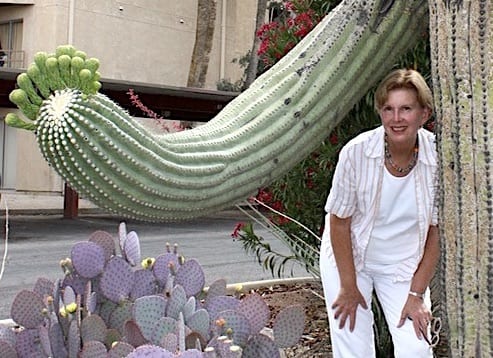
Can you grow saguaros in Tucson? You bet! In California, probably not.
The secret to happy succulents is to duplicate their native growing conditions as much as possible. The more you know about where a succulent comes from, the easier you can do this…up to a point. Occasionally (not often) it’s nearly impossible. No matter what you do, saguaros don’t thrive beyond the Sonoran Desert, where they grow like weeds. But most other succulents, regardless of origin, can be accommodated anywhere.
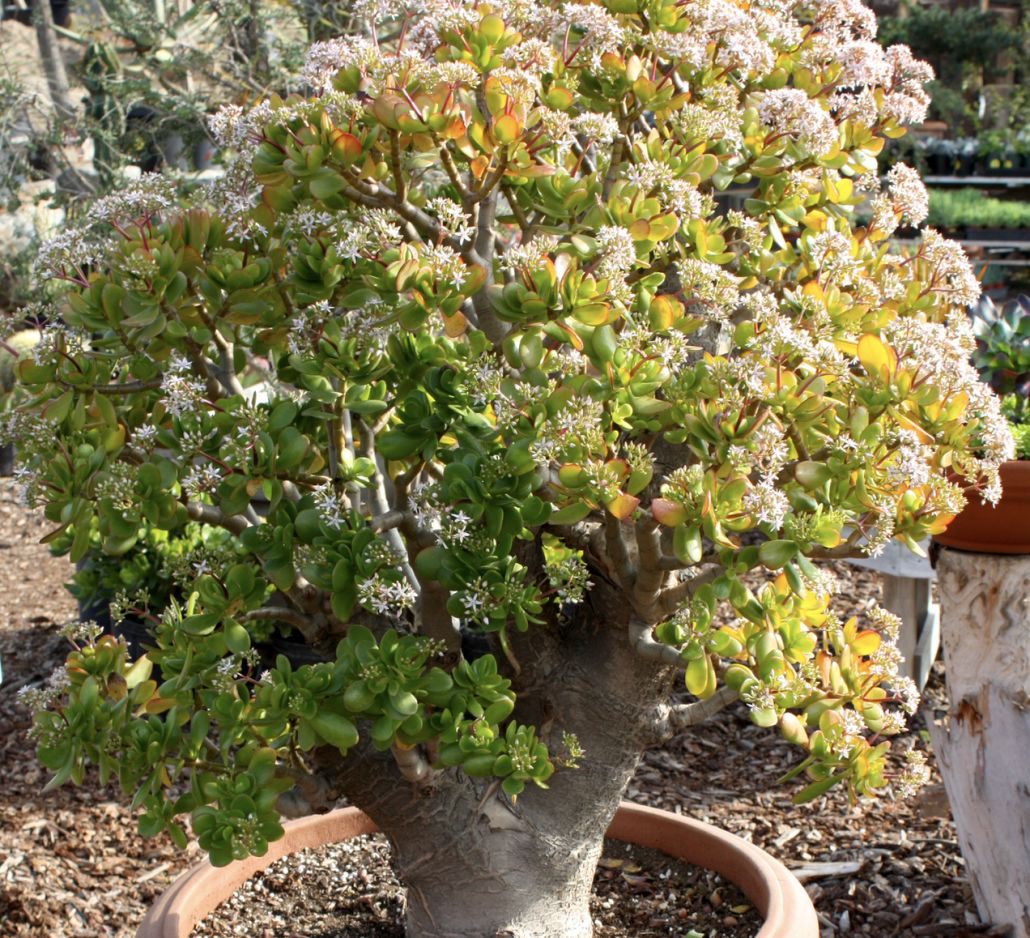
There’s a reason jade (Crassula ovata) is in everyone’s collection.
Some are super easy. Jade, for example, survives under- or over-watering, starts readily from cuttings, seldom gets pests, loves sun but tolerates shade, and will grow indoors or out if protected from freezing temps.
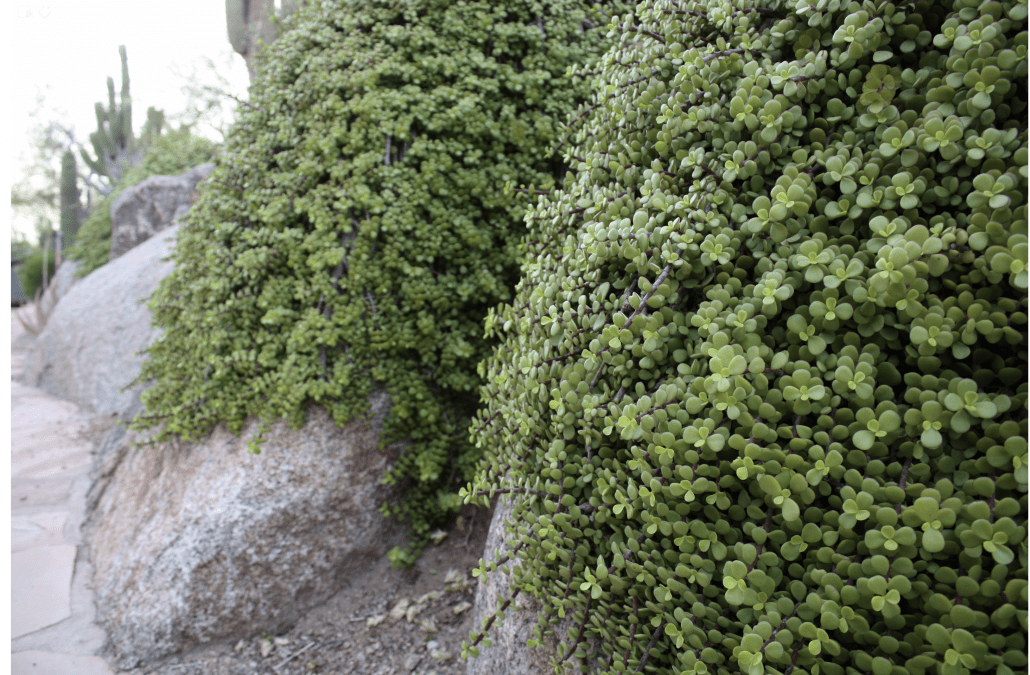
Portulacaria afra ‘Minima’ doesn’t mind desert heat or high humidity.
This may surprise you, but a succulent I’ve seen in gardens from Miami to Honolulu and everywhere in-between—including Phoenix—is from South Africa: elephant’s food (Portulacaria afra).
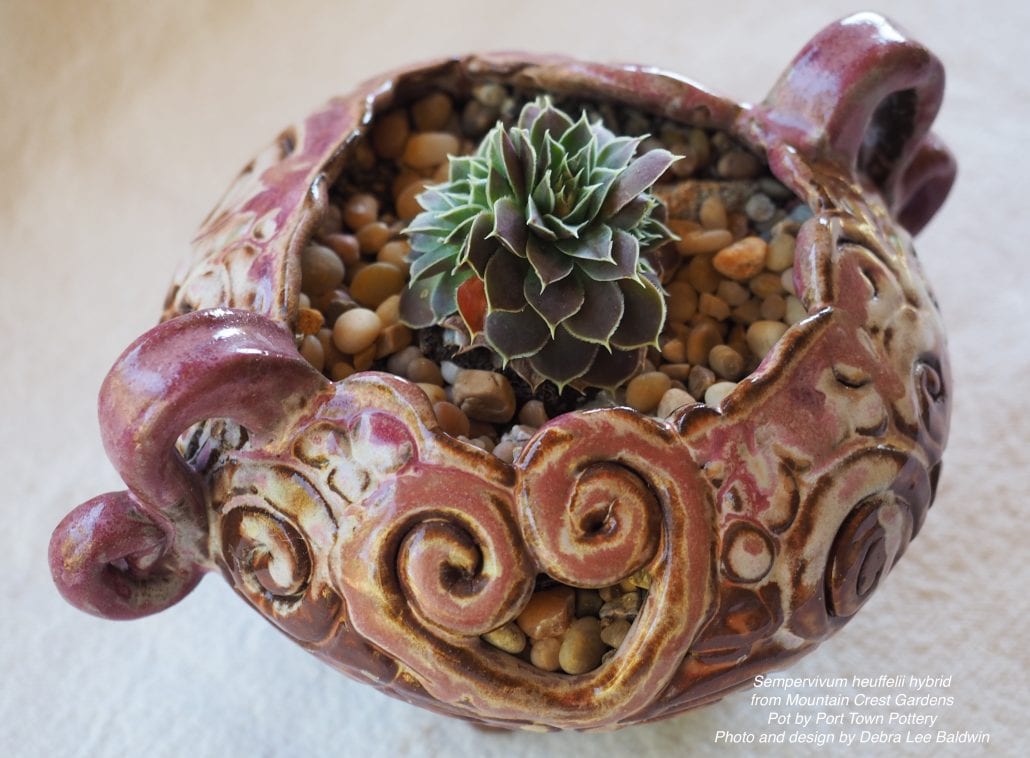
Sempervivum heuffelii hybrids, largely considered cold-climate succulents, do fine when grown in bright shade in the Southwest. Mine are happy as pot plants.

Haworthias (related to aloes) make terrific terrarium succulents. This one, from my “Stunning Succulent Arrangements” online Craftsy class, features Haworthia attenuata ‘Variegata’. (Yes you can grow succulents in nondraining containers. This one, on my kitchen counter near a window, gets a mere 1/4 cup of water monthly.)
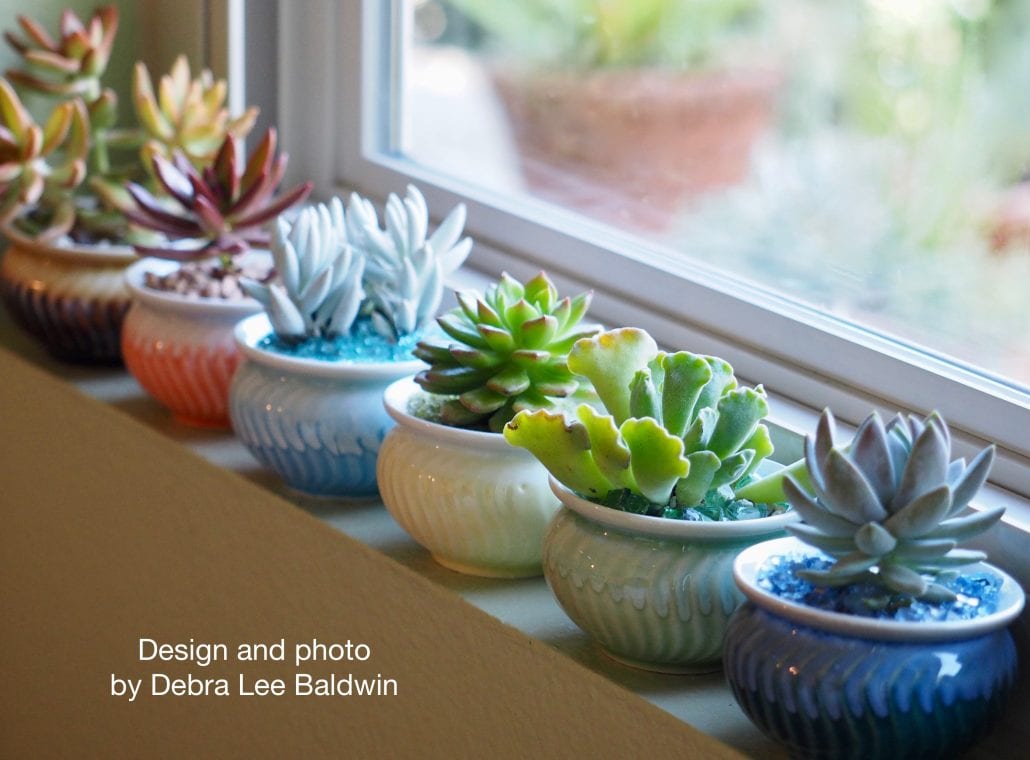
Windowsill succulents in my office.
Nearly any succulent when small will bask happily on a bright windowsill.
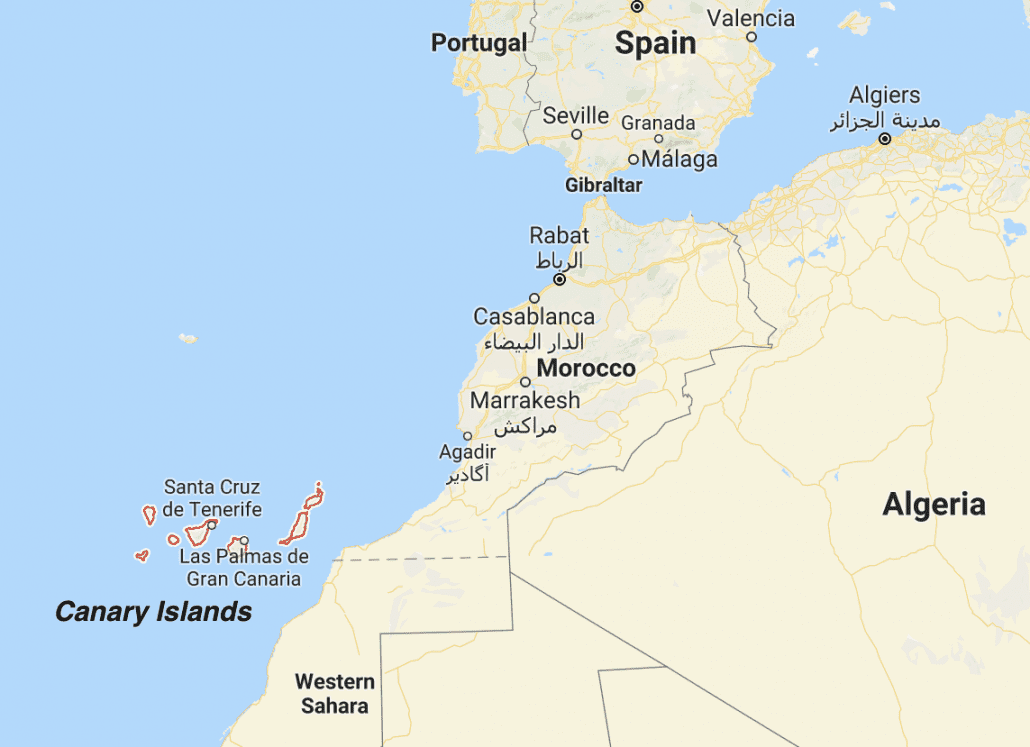
The mild temperatures and drought-rainfall cycles of southern CA replicate regions of Africa, Madagascar and the Canary Islands, where many desirable succulents originate.
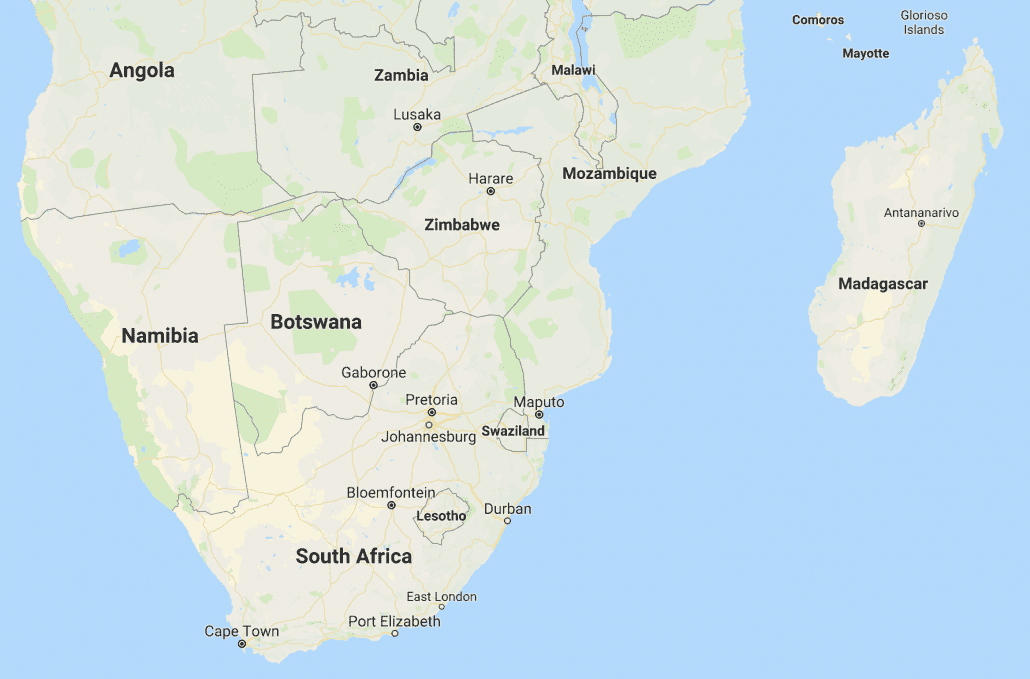
Florida and Hawaii may seem to have climates similar to southern CA’s, but succulents see it differently. Where there’s high humidity and summer rainstorms, it can be challenging to grow aeoniums, agaves, aloes, dudleyas, echeverias, euphorbias and senecios.
Think about it: Succulents by definition survive dry spells by storing water in fleshy leaves and stems. They’re not set up to handle continually moist conditions. Add cold to that, and the buzzer goes off. The farther north and east you go from coastal CA, the fewer types of succulents you can grow effortlessly in your garden. Read about those you can grow in colder, wetter climates.
Echeverias, from high elevations in Mexico, top the popularity list in terms of resembling roses that never fade. Their rosette forms serve a practical purpose: they funnel rainwater to roots.
From the Timber Press Guide to Succulent Plants of the World:
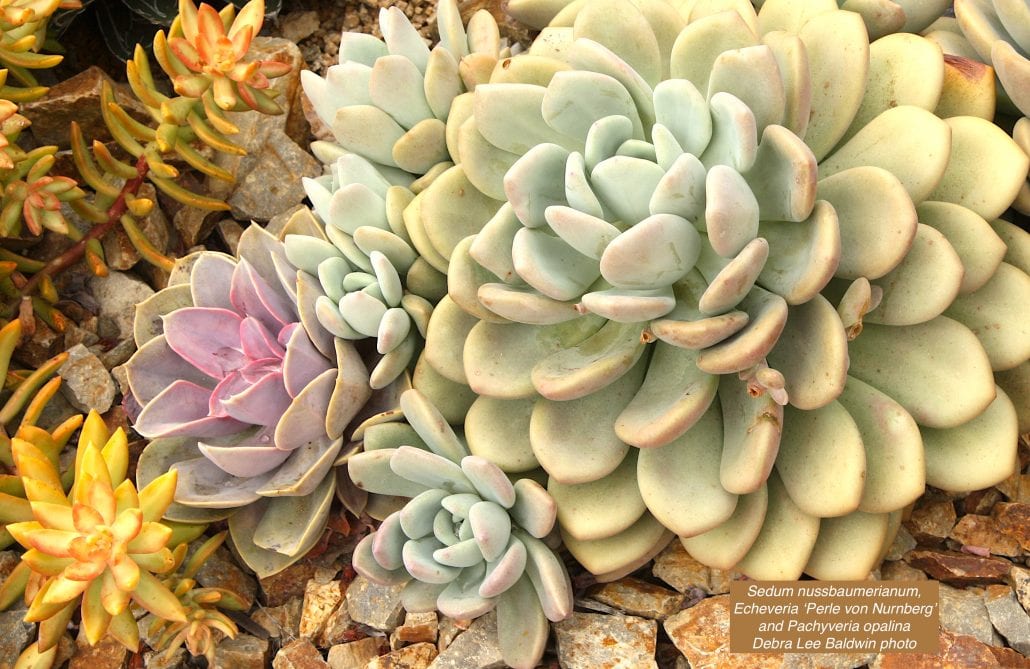
Other succulents from Mexico and Central America such as graptopetalums, pachyphytums, and large-leaved sedums have leaves that pop easily off stems. These tumble down and take root far enough from the parent plant that they don’t compete with it for nutrients.
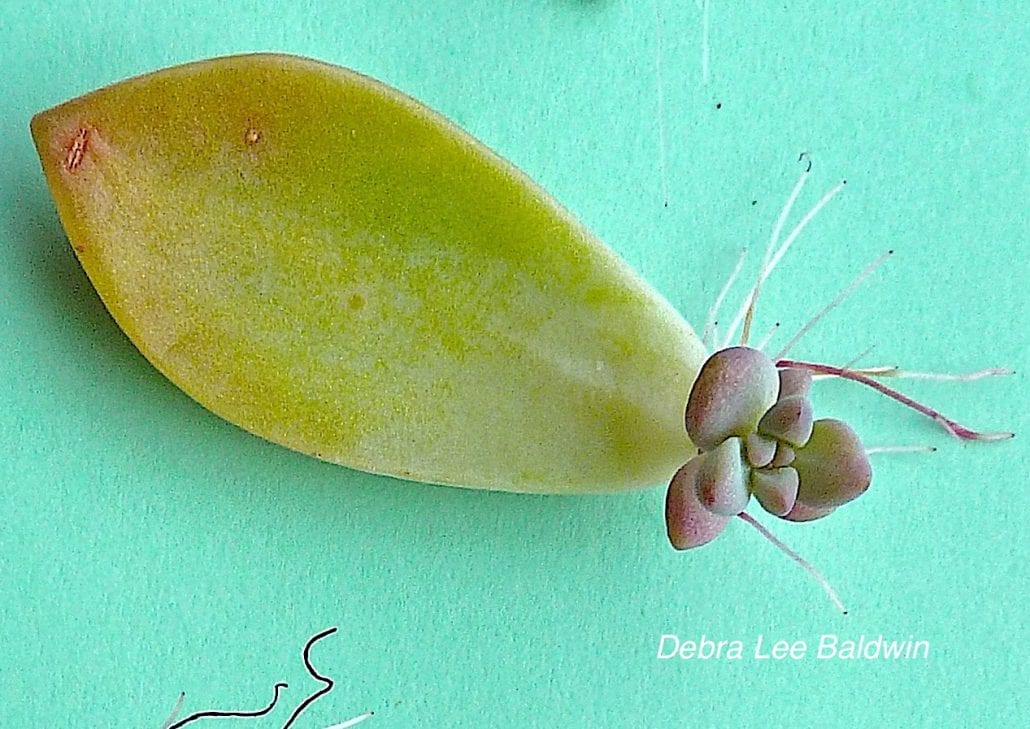
Like the plump bodies of tadpoles, fat leaves feed juvenile succulents, enabling them to grow and develop independently. The leaf slowly withers as the baby plant drains moisture and nutrients to form its own leaves and roots.
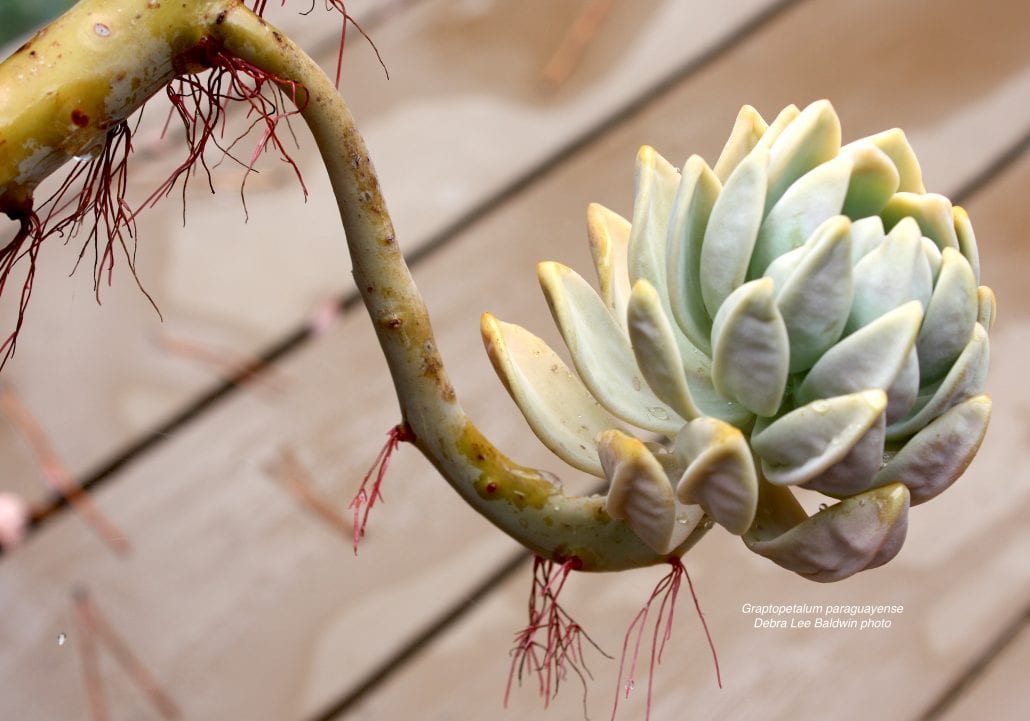
Succulents with ever-lengthening, pendant stems may become bearded with roots as they sniff out soil pockets.
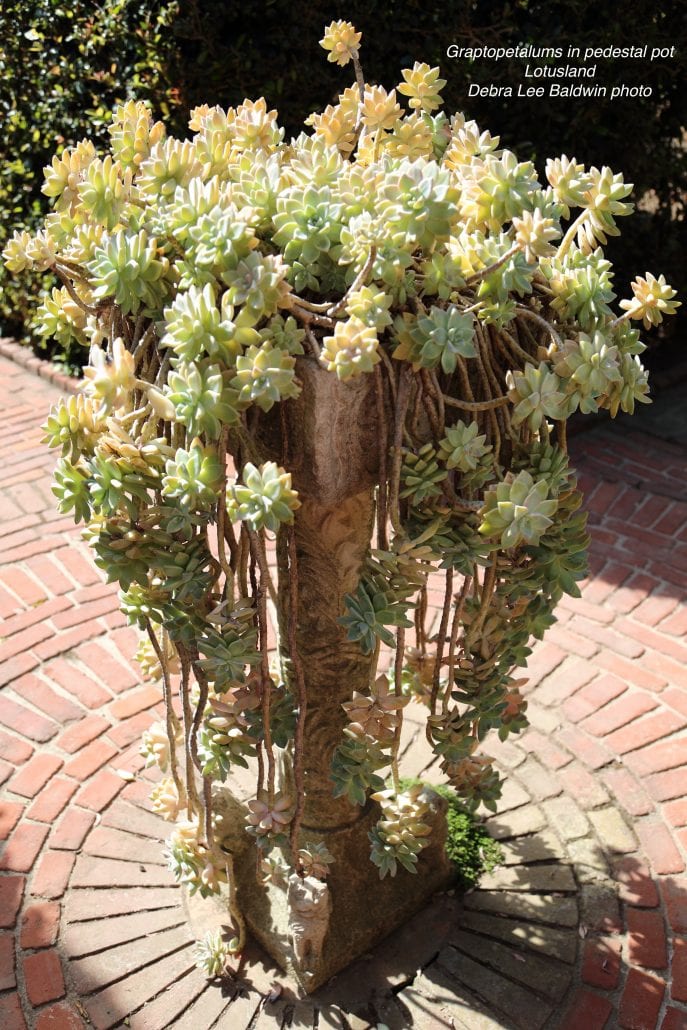
So, how do you make echeverias and their nook-and-cranny relatives happy? Tuck them into niches in rock walls, and let them cascade from terraces, pedestal pots and hanging baskets. Place any fat, fallen leaves atop the soil out of direct sun. (Don’t bury or water them lest they rot.)

Not surprisingly, the easiest succulents to grow throughout the arid Southwest, and that survive with no irrigation other than rainfall once established, are those native to the region: cacti, agaves, dasylirions, yuccas, hesperaloes and beaucarneas. (Those last four don’t have fleshy leaves, but rather store moisture in their stems or cores.)
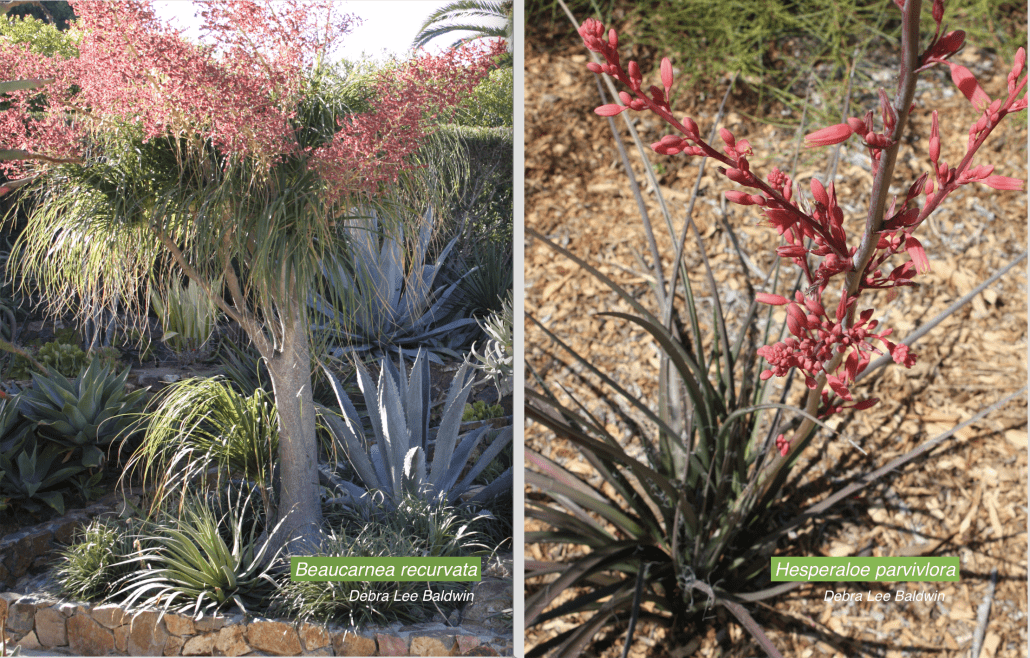
Consult my books for the best succulents for your area and how to keep them happy. You’ll discover how to use them in all sorts of design applications, from pots and projects to in-ground gardens and landscapes.
Related info on this site:
Succulents for Coastal Southern California Gardens
These thrive in frost-free, low-rainfall regions within several miles of the ocean (i.e. coastal CA from San Diego to Santa Barbara)…[Continue reading]
How to Grow Succulents by Season and Region
Where you live and the time of year make a big difference as to how well your succulents grow and perform, and even which kinds you should choose…[Continue reading]
The post The Secret to Happy Succulents appeared first on Succulents and Succulent Garden Design | Debra Lee Baldwin.
from Succulents and Succulent Garden Design | Debra Lee Baldwin https://ift.tt/2NT5ca5
via IFTTT

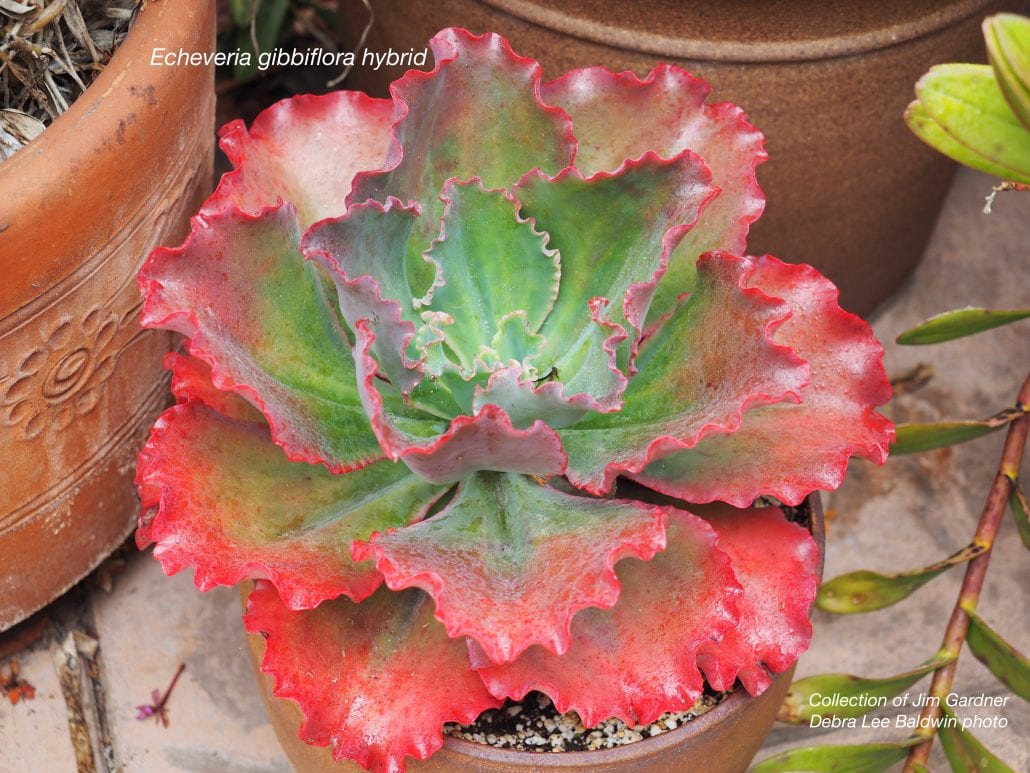


No hay comentarios:
Publicar un comentario